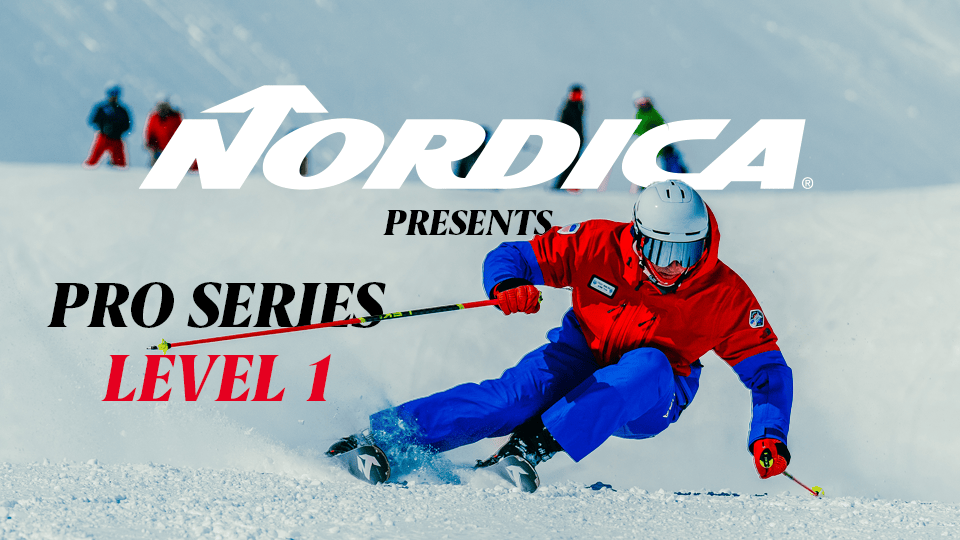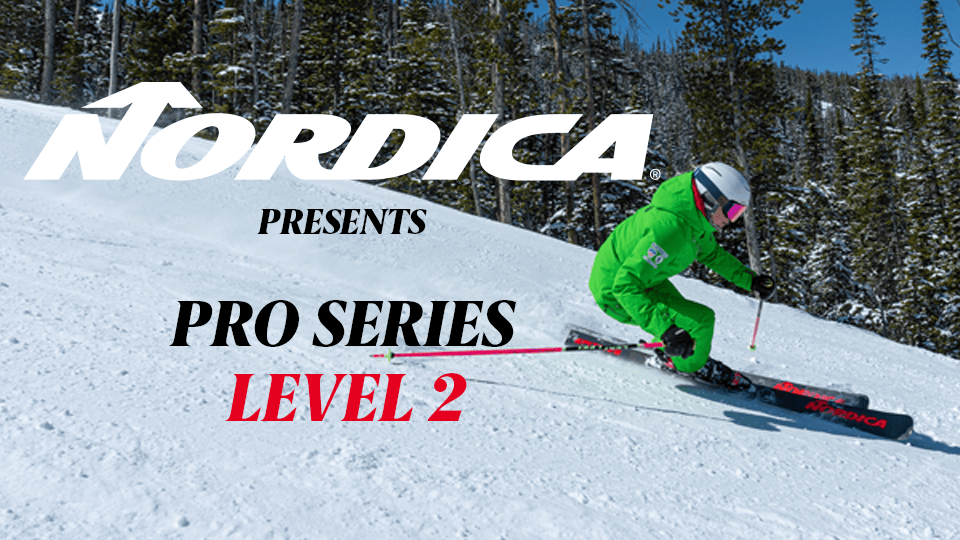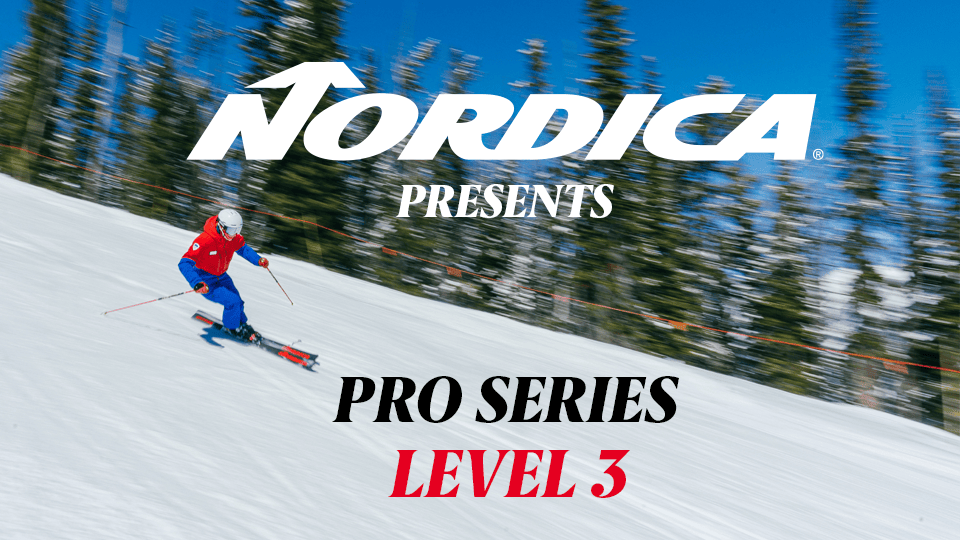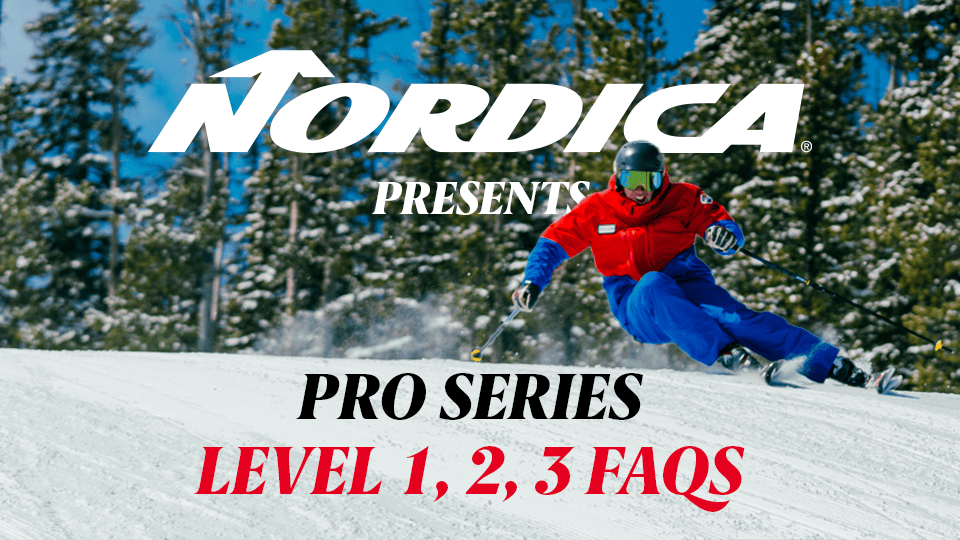ski instructor certification video series
how to pass your level 1 - 2 - 3

Welcome, this definitive series of ski instruction videos designed with one clear purpose in mind: helping ski instructors like you conquer the unknowns of ski examinations and attain the pinnacle of your skiing career.
Whether
you're an aspiring instructor looking to pass your first certification exam or a seasoned pro
aiming to reach the highest levels of mastery, this comprehensive video series is your ultimate
companion on the journey to success.
These videos were created by a team of seasoned ski instructors who have successfully navigated
the challenges of ski examinations. We understand the unique demands of these tests, and we're
here to help lead you through every maneuver needed to pass your exams. In this series, we'll
break down the exam process, from the technical skills you need to master on the mountain to
pedagogical strategies.
Whether you're preparing for PSIA, CSIA, BASI, or any other ski instructor certification, our
goal is simple: to empower you with the knowledge, skills, and confidence to not just pass your
exams, but to truly shine as a ski instructor.
best of luck and have a great and successful season!

about level 1
video
watch the video full screen
This Level 1 video is focused on all the fundamentals needed to pass your level 1 certifications. Those criteria covered are below:
straight run in athletic stance:
straight run demonstrating a basic athletic stance.
garlands:
Garlands may be used to assess the ability to vary the successful parameters of moving
across the hill from point a to point b. The turn shape can be asymmetrical between turns
and adaptations from turn to turn may be necessary to finish at point b. Variations - Make
short radius garland turns going both directions across the hill. - Use slopes with
different pitches while keeping a similar turn size. Funnel Turns: This task can be used to
assess the ability to actively change turn size, while maintaining speed control.
Variations - Short turns to long turns while maintaining the same speed. Long turns to short
turns while maintaining the same speed.
skidded parallel turns with speed control:
This task can be used to assess the ability to turn legs consistently and separate from the
upper body to create the desired turn shape. During the initiation phase edge change needs
to be mostly simultaneous. Through the shaping and finish phase of the turn the edge angle
needs to allow skidding and not carving.
Variations - Stand only on the outside ski during shaping and finish phases of the turn. -
Extend to create a hop off the snow at initiation.
wedge turns:
This task can be used to show the ability to use a centered stance while managing pressure
along the length of the skis. This will allow the skier to turn the legs separate from the
upper body creating a consistent, symmetrical turn shape and speed.
Variations - Make a series of steered turns with lower edge angles and more leg rotation. -
Make a series of steered turns with higher edge angles and less leg rotation. - Make a
series of turns on a hill with a double fall line and maintain a corridor.
traverse on downhill ski:
This task can be used to assess the ability to keep the uphill ski off the snow for the
length of the traverse, showing the ability to direct pressure to the downhill/ outside ski.
Variations - Go both directions to practice on each foot. - Create a narrow track across the
hill. - Create a wider or more brushed track across the hill.
falling leaf:
This task can be used to assess the ability to move fore and aft along their skis while side
slipping down the hill. The ability to manage fore/aft pressure on command is assessed.
Variations - Move across the hill to greater or lesser amounts. - Lose more elevation than
travel across the hill.
about level 2
video
watch the video full screen
This Level 2 video is focused on all the fundamentals needed to pass your level 2 certifications. Those criteria covered are below:
funnel turn:
This task can be used to assess the ability to continuously manage turn shape and size
by moving from medium radius turns to progressively shorter radius turns. Turn shape and
size needs to be actively adapted travel down the fall line should be maintained.
Variations - Long turns to short turns. - Short turns to shorter turns. - Reverse funnel
using short to longer turns while maintaining the same speed.
turns within a corridor:
Ski a series of symmetrical (same width and length) turns within a corridor keeping a
consistent speed through terrain and pitch changes.
Variations - Make a series a turns in one corridor and then change to another for a
series of turns and change back to the original corridor (lane changes). - Use different
size corridors for each series of turns. - Proactively change lines in easy moguls.
bumps:
Use this task to assess the ability to maintain a line by adapting the use of the
fundamentals as needed. Example: Maintaining pressure along the length of the skis
allows the skier to turn the legs effectively , steering the skis and creating the
desired turn shape. Edge change is simultaneous at the finish and initiation phase.
Through the turn edges are at an angle to allow for shaping and speed control. The
magnitude of pressure is regulated throughout to keep the skis in contact with the snow.
Variations - Change where you turn on or around the bumps while maintaining a consistent
speed. - Use the terrain variations and timing of pressure release to lift skis off the
snow at transition. - Use a low edge angle to higher edge angle in one phase to control
speed.
short radius parallel turns:
This task can be used to assess the ability to turn legs separately from the upper body
through the entire turn. At the initiation phase the simultaneous edge change needs to
be shown consistently. Also, the pressure shifts toward the new outside ski and is
directed to the outside ski throughout the turn. During the shaping and finish phases,
the edge angle and rotation of skis are managed to allow steering of the skis.
Variations - Steer the skis rapidly through initiation and shaping with higher edge
angles at finish. - Highest edge angles during shaping phase. - Lowest edge angle
possible while maintaining symmetrical turn shape.
railroad tracks:
This task can be used to show the ability to control and adjust edge angles. Example:
Consistently increase and decrease edge angle from one set of corresponding edges to the
other. The ski performance creates two distinct lines in the snow.
Variations - Perform railroad track turns with weight primarily on one ski. - Change the
width of the corridor while leaving two narrow tracks in the snow.
thousand steps:
This task can be used to assess the ability to manage fore/aft pressure by lifting each
ski off the snow in a repeated stepping motion. Manage the rate of rotation so that a
round and consistent turn shape is produced from turn to turn.
Variations - Increase the amount of ski divergence to tighten the turn radius. - Keep
edge angles high enough to create a platform to move from foot to foot.
hockey stop in both directions:
This task can be used to assess the ability to turn the legs separate from the upper
body and direct pressure to the outside ski while turning the legs across the hill to a
stop. Skier must have the ability to control fore/aft pressure to stay in a corridor.
Variations - Control edge angle to allow for a long sideways slip before stopping. -
Vary the intensity of stop from easy or soft to quick and abrupt.
about level 3
video
watch the video full screen
This Level 3 video is focused on all the fundamentals needed to pass your level 3 certifications. Those criteria covered are below:
short radius basic parallel on ungroomed terrain:
The skier creates symmetrical turns with constant speed using the DIRT of the
fundamentals to adapt to the terrain and snow conditions. Symmetrical turns are achieved
through the proactive blending of edging and rotating the skis throughout the entire
turn.
Variations - Steer the skis faster during initiation to shaping, then create higher edge
angles, shaping to finish. - Progressively increase edge angles from initiation to
shaping, with the highest edge angles during shaping phase, reducing edge angles to
finish. - Use low edge angles and consistent steering of the ski to shape.
short radius pivot slip combo:
Dynamic short radius turns to pivot slips and back to dynamic short radius turns
(repeat). The skier manages the integration of fundamentals from high edge angles and
pressure to low edge angles and rotation and back again.
Variations - Higher or lower speeds. - Vary the steepness and fall-line of the terrain.
- Vary the shape and size of the two types of turns. - Vary the intensity and where that
intensity occurs in the turns.
dynamic medium radius turns in bumps:
This task can be used to assess the proactive blending of all the fundamentals throughout all the turn phases. The blending of the fundamentals needs to allow for the skier to achieve dynamic medium radius turns consistently through the entire run of changing conditions and terrain. Variations - Intentional and proactive lane changes in the bumps. - Intentionally adjust to a specific size and shape of turn and maintain it while adapting to the small and large variations in terrain.
dynamic short radius turns:
This task can be used to see how the skier generates forces through dynamics and speed
and then how they manage those forces. Highest edge angle occurs in the shaping phase of
the turn, while the edge angle is continuously increased and decreased throughout the
turn.
Variations - “Reaching” short radius where legs move away from the body and deviate from
a centerline. - Body stays on a centerline and feet and skis stay more under the body. -
Intentionally change the highest edge angle to initiation, shaping, or finish
hop turns:
The ability to change the usage and functionality of hop turns through varying snow
conditions, corridors, and pitch. Hop turns in a corridor with difficult conditions on a
double black are different than hop turns on a groomed black pitch on firm snow.
Variations - In a narrow corridor or chute. - Beginner off piste terrain. - Groomed
black terrain. – Outside ski to outside ski. - Edge set to edge set.
one-ski skiing:
This task can be used to see how you can use all the fundamentals while skiing on one ski. Variations - Consistent turn size on both big toe and little toe side. - Speed control. - Turn shape symmetrical within the turn and from big toe to little toe side. - Ability to manage the fundamentals from a skidded to a carved turn.
faq with the
pros
watch the video full screen
Here, Michael, Troy and Meagan cover some of the most commonly asked questions ski instructors have when going out for their certification exams.

michael rogan
PSIA NATIONAL TEAM COACH (ALPINE)
NORDICAN SINCE 1994
Operations Manager Portillo Chile
Ski Instructor Heavenly Resort Lake Tahoe
Home Mountain:
Heavenly CA and Portillo Chile
I LOVE my Nordica Dobermann 5 RD that I customize into a great all mountain skiing
slipper.
My favorite skis are the new Steadfast 85, Multigara and Spitfire collection.
When not skiing....which is not often, (because of double winters I average over 200
days per season for the last 34 years) I love to ride mountain bikes with my wife and
teach golf balls to swim.
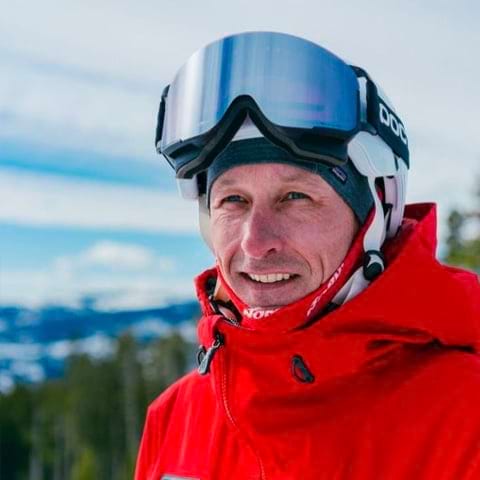
troy walsh
psia national team member (alpine)
psia-e examiner
nordican since 2023
home mountain:
sunday river, me
I’ve been full time in the ski industry since 95, skiing full time in the winters between Sunday River and for PSIA. Becoming a pro ski instructor has taken me all over the globe, each place is unique and I look forward to going new places. When not skiing I enjoy any outdoor activity, I am fortunate to live in an area that gives me plenty of opportunities for outdoor fun.
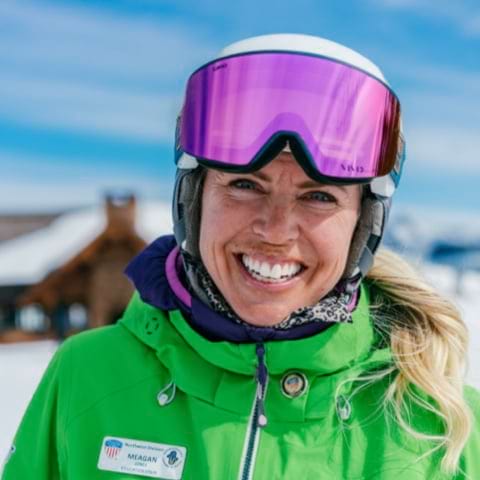
meagan jones
psia nw tech team (alpine)
ski instructor & examiner
nordican since 2013
Home Mountain:
Mammoth & Whitefish
I love all the Spit re DC's, and if it's really deep, I'll bust out my Santa Ana 104's. I've been wearing Nordica boots for 20 years and am excited to retire my Doberman GP 130s for the new Dobermann5 S! Although I spent most of my career in sunny Mammoth, California, I currently ski in the fog of Northern Montana. I'm happiest when teaching education events for the region and coaching instructors. In the summer, I ride bikes, dream of skiing, and take on home renovation projects I'm wildly unqualified for.
